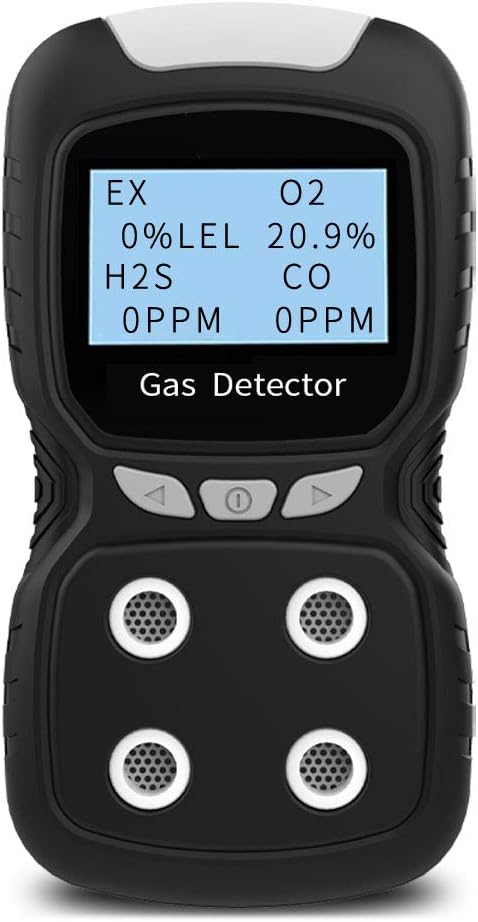







Understanding Gas Monitors: Your Essential Guide
In today’s world, safety is paramount, especially when dealing with potentially hazardous gases. Whether you’re a homeowner, a business owner, or someone who works in industrial settings, a gas monitor can be your first line of defense against invisible dangers. In this article, we will explore what gas monitors are, how they work, and why you might need one.
What is a Gas Monitor?
A gas monitor is a device designed to detect the presence of specific gases in an area. It serves as a crucial tool for safety, providing real-time monitoring of environments that may contain toxic or combustible gases. Think of it as your personal safety sentinel, alerting you to dangers before they escalate into serious problems.
How Do Gas Monitors Work?
At their core, gas monitors operate using sensors that detect gas concentrations in the air. These sensors can vary depending on the type of gas being monitored. Some common types include:
1. **Electrochemical Sensors**: These are popular for detecting toxic gases like carbon monoxide or hydrogen sulfide. They work by producing a chemical reaction that generates a measurable electrical current proportional to the gas concentration.
2. **Infrared Sensors**: Often used for detecting combustible gases, these sensors measure the absorption of infrared light by gas molecules. When gas is present, it absorbs specific wavelengths of light, and the monitor detects this change.
3. **Catalytic Bead Sensors**: Ideal for flammable gases, these sensors operate by measuring the heat produced during the oxidation of gas on a catalyst surface.
Each type has its strengths and weaknesses, making it essential to choose a monitor that fits your specific needs.
Why Do You Need a Gas Monitor?
Imagine waking up in the middle of the night to a strange smell. Your heart races, and you wonder what it could be. Is it a gas leak? A malfunctioning appliance? The reality is that many gases are odorless and colorless, making them difficult to detect without proper equipment. Here are a few reasons why investing in a gas monitor is a smart choice:
– **Safety First**: The primary purpose of a gas monitor is to protect lives. Early detection can prevent accidents and health issues related to gas exposure.
– **Regulatory Compliance**: In many industries, using gas monitors is not just a recommendation; it’s a legal requirement. Compliance ensures that your workplace meets safety standards, protecting both employees and the business.
– **Peace of Mind**: Knowing that you have a gas monitor in place allows you to focus on other important tasks without the constant worry of gas exposure.
Types of Gas Monitors
When it comes to choosing the right gas monitor, several options are available based on your specific needs. Here’s a closer look at some common types:
Portable Gas Monitors
These handheld devices are ideal for workers in the field. Lightweight and easy to use, portable gas monitors can detect various gases and provide real-time readings. They are perfect for construction sites, confined spaces, or any environment where gases might pose a risk.
Fixed Gas Monitors
Fixed gas monitors are installed in a specific location and continuously monitor the air quality. They are ideal for industrial settings where gas leaks are more likely. These monitors can be integrated into a building’s safety system, providing alerts and data to a central monitoring station.
Multi-Gas Monitors
For those needing comprehensive protection, multi-gas monitors can detect several gases simultaneously. These versatile devices are perfect for environments where multiple gases may be present. Whether you’re in manufacturing, mining, or any industry with gas exposure risks, a multi-gas monitor can be invaluable.
Key Features to Look For
When selecting a gas monitor, consider the following features:
– **Sensor Type**: Ensure the monitor has the appropriate sensors for the gases you need to detect.
– **Calibration**: Look for monitors that are easy to calibrate. Regular calibration ensures accurate readings.
– **Battery Life**: A long battery life is crucial, especially for portable devices. You don’t want your monitor to run out of juice when you need it most.
– **Alarm System**: Choose a monitor with audible and visual alarms. These alerts can be lifesaving in critical situations.
– **Durability**: Consider the environment where the monitor will be used. A rugged design is essential for industrial or outdoor settings.
Conclusion
In conclusion, gas monitors are vital for ensuring safety in various environments, from homes to industrial sites. By understanding the different types of gas monitors, their functionality, and the key features to consider, you can make an informed decision that prioritizes safety. Remember, investing in a gas monitor is not just about compliance; it’s about protecting lives and securing peace of mind.
FAQs
1. How often should I calibrate my gas monitor?
Calibration frequency can vary depending on the manufacturer’s recommendations and usage conditions. Generally, it’s advisable to calibrate your gas monitor monthly or before each use in critical environments.
2. Can gas monitors detect all types of gases?
No, gas monitors are typically designed to detect specific gases. It’s essential to choose a monitor that is equipped with the appropriate sensors for the gases you need to monitor.
3. What should I do if my gas monitor alarms?
If your gas monitor alarms, immediately evacuate the area and investigate the source of the alarm. If it’s safe to do so, ventilate the area and contact emergency services for assistance. Always prioritize your safety and the safety of others.
